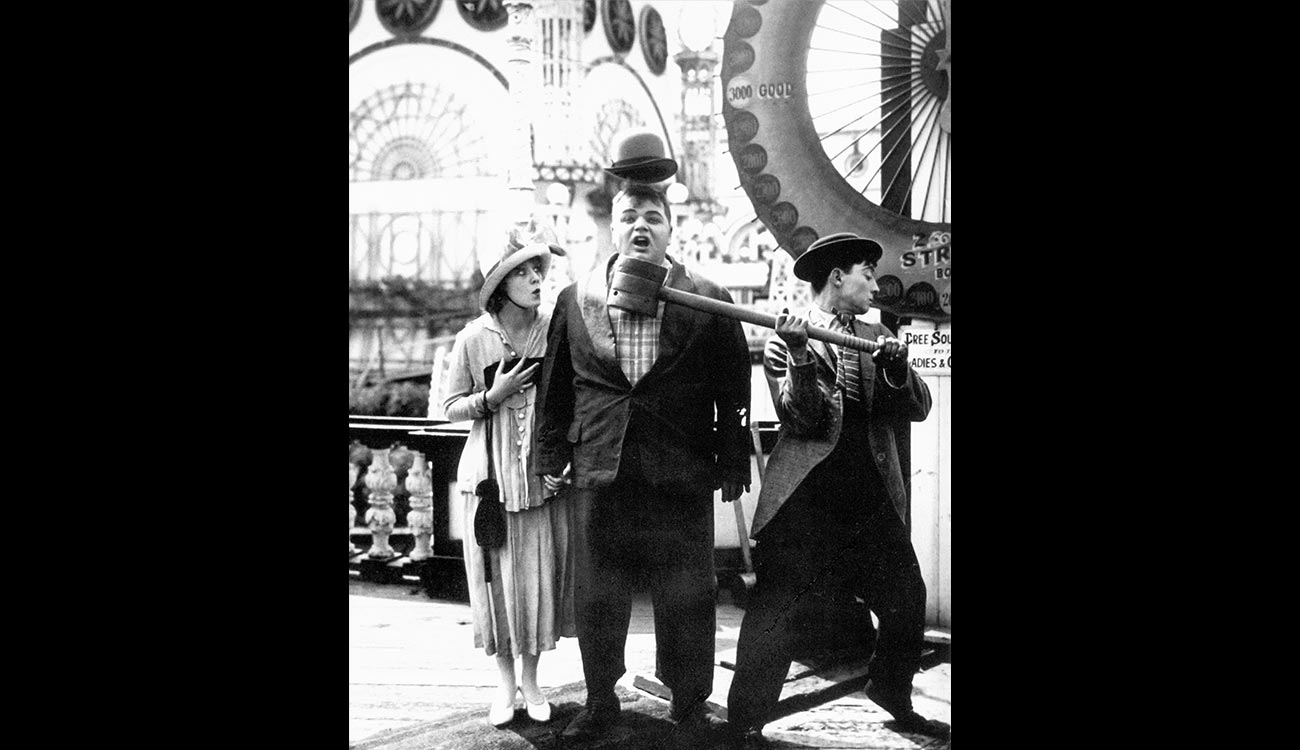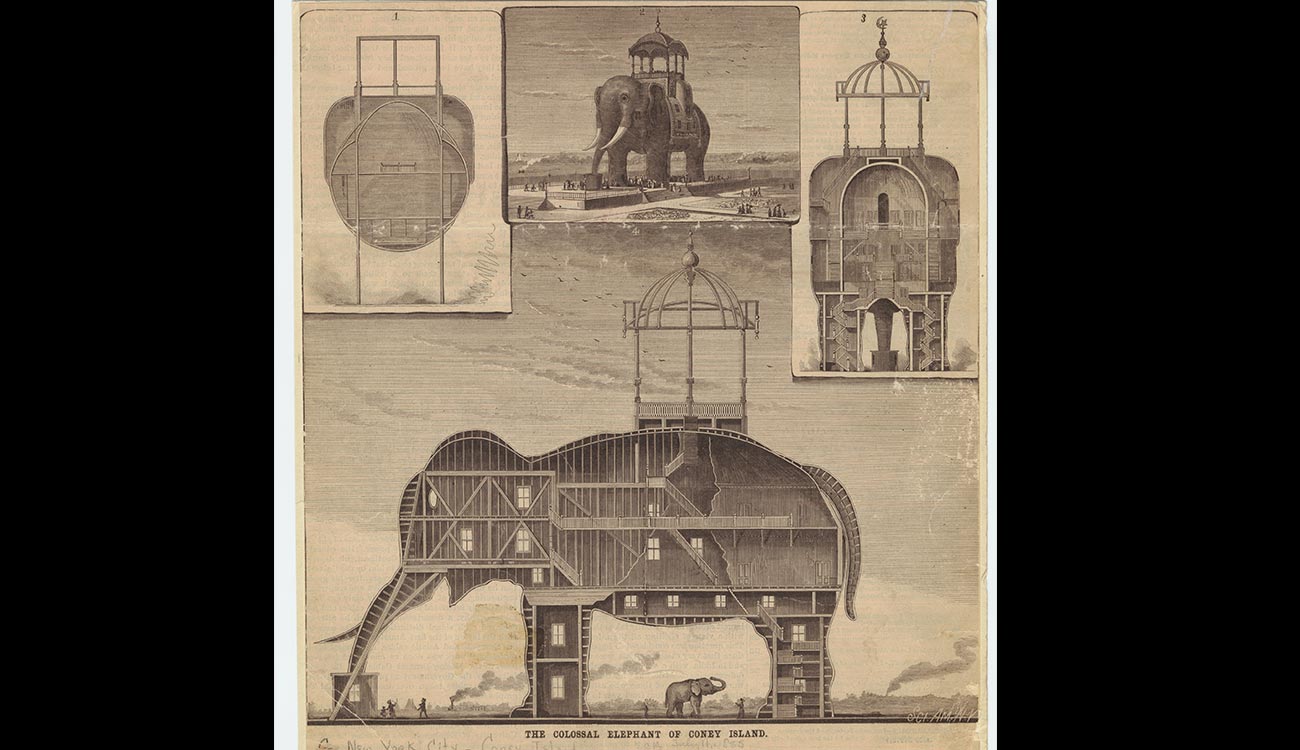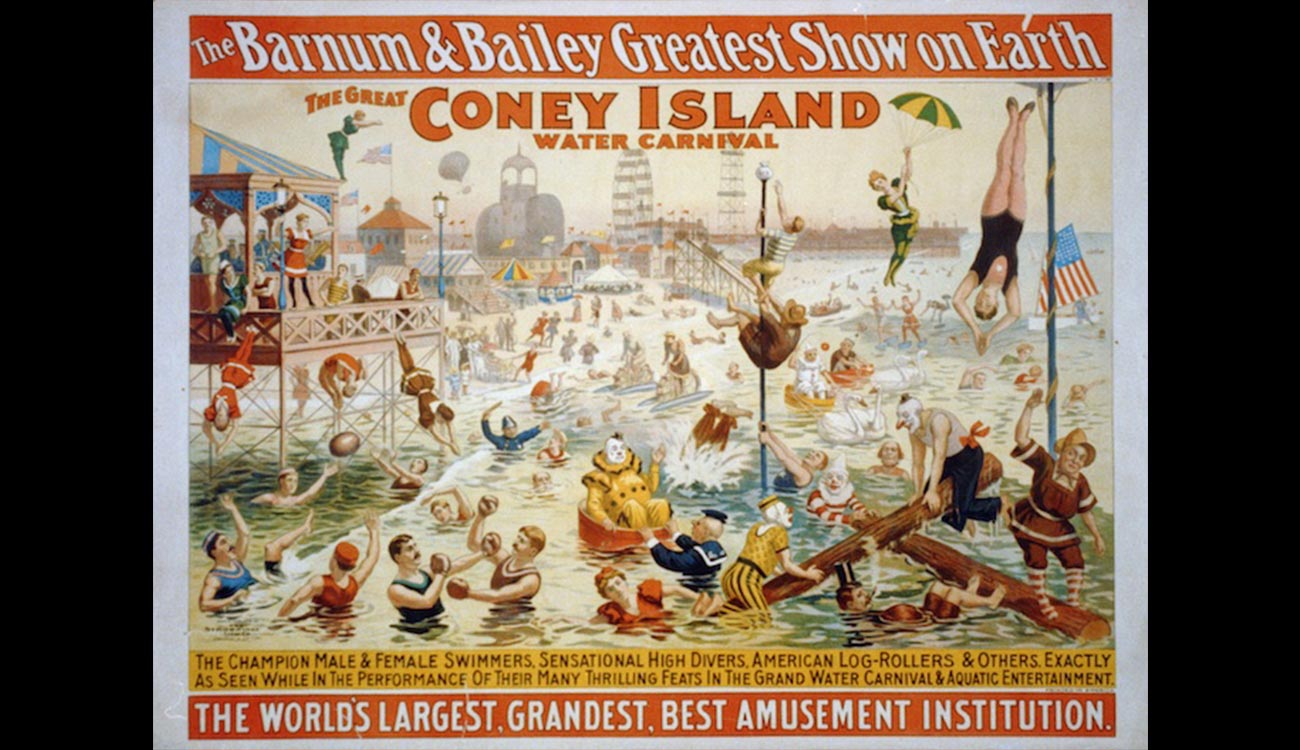Coney Island: Visions of an American Dreamland opens at The Reading Public Museum
For more than 150 years, Coney Island, a strip of sand at the mouth of New York Harbor, has occupied a singular place in the American imagination. From a beginning as a watering hole for the wealthy, through its transformation into an amusement and entertainment mecca for the masses, to its struggle for renewal in recent decades, an extraordinary array of artists have viewed Coney Island as a microcosm of the American experience. The exhibition brings to life the excitement of Coney Island, showing visitors how its magnetic world of attractions has become a touchstone for American mass culture and popular recreation. Coney Island: Visions of an American Dreamland opened Saturday, June 16 at the Reading Public Museum, just in time for the beginning of the summer season. The exhibition runs through Sunday, August 12.
Adapted from the Wadsworth Atheneum Museum of Art’s flagship exhibition Coney Island: Visions of an American Dreamland, 1861–2008, this new traveling exhibition from NEH on the Road will explore America’s playground as a place and as an idea, examining its persistent presence in the American imagination. The constant novelty of the resort made it a seductively liberating subject for artists. What they saw and how they chose to portray it varied widely in style and mood over time, mirroring the aspirations and disappointments of the era and of the country. The exhibition is arranged chronologically, with each section titled after contemporary quotations that also communicate changing popular perceptions about Coney Island through the generations.
“Down at Coney Isle,” 1861–1894, looks at the resort’s beginnings as “New York’s sandy backyard,” a blend of genteeland popular attractions made accessible by ferry, tram, and steam railway. “The World’s Greatest Playground,” 1895–1929, examines the explosion of entertainment accessible to the masses in parks like Steeplechase, Dreamland, and Luna Park, themselves the settings for fantastic encounters and new technologies.
“The Nickel Empire,” 1930–1939, shows how, after the stock market crash of 1929, Coney Island provided a welcome and affordable diversion, where disorienting rides could spark romance between strangers in a setting where “the greatest show is the people themselves.” From the beginning, Coney Island drew crowds from all social classes, races, and ethnicities, and “A Coney Island of the Mind,” 1940–1961, inspects how Coney Island reflected American life during and after World War II, providing a refuge from the city streets and a setting for intimacy on its crowded beaches, yet also offering metaphors for life and death in amusements like the House of Horrors and the World in Wax Musée.
The final section, “Requiem for a Dream,” 1962–2008, traces Coney’s decline amid turbulent decades that saw urban disinvestment and renewal attempts, including the closing of its last twentieth-century amusement park, Astroland. Yet ultimately, Coney’s persistence and continued re-emergence continue to attract new visions and renewed crowds.
Throughout the exhibition, artifacts display how the modern American mass-culture industry was born at Coney Island. The exhibition investigates the rise of American leisure and traces Coney Island’s influence on amusement parks and popular culture throughout the country. Photographs, ephemera, film clips, and hands-on interactives immerse visitors in the experience of Coney Island.
This exhibition was organized by Wadsworth Atheneum Museum of Art, Hartford, CT, in partnership with Mid-America Arts Alliance, Kansas City, MO.
About NEH on the Road
NEH on the Road (NEHOTR) is a fully funded initiative of the National Endowment for
the Humanities, designed to create wider national access to the ideas, themes, and stories explored in major grant-funded NEH exhibitions. Mid-America Arts Alliance has provided the curatorial adaptation, design, production, and tour management
of the NEHOTR program since 2002. Each exhibition is designed to fit within 2,000 square feet and features abundant artifacts, integrated didactic panels, banners, and other supporting materials that best reflect the content and scholarship of the original large-scale exhibitions. Learn more at www.nehontheroad.org.
About the National Endowment for the Humanities
Created in 1965 as an independent federal agency, the National Endowment for the Humanities supports research and learning in history, literature, philosophy, and other areas of the humanities by funding selected, peer-reviewed proposals from around the nation. Additional information about the National Endowment for the Humanities and its grant programs is available at: www.neh.gov.


 Menu
Menu


